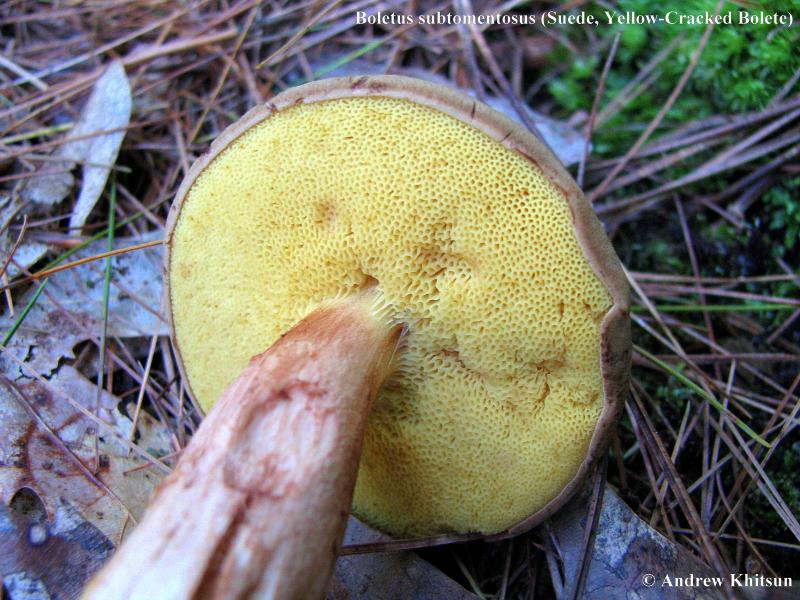|
6/1/2015
June 2015 Boletus subtomentosus (Suede, Yellow-Cracked Bolete), synonym Xerocomus subtomentosusBoletus subtomentosus
[ Basidiomycetes > Boletales > Boletaceae > Boletus . . . ] by Michael Kuo This common bolete can be a nightmare to identify if you don’t have a drop of common household ammonia handy. Maybe it’s just me, but every time I find Boletus subtomentosus, I promptly forget most of what I know about boletes and spend hours trying to figure out what I’ve found. It’s just such an average bolete; nothing really seems to stand out as a distinctive identification feature. Except the ammonia thing: a drop on the cap produces an instant mahogany red reaction. This will separate Boletus subtomentosus from some of the other species of “boletish” (the ones that are velvety-ish and brownish-capped, with yellowish pore surfaces that bruise-ish faintly bluish or greenish), including Boletus spadiceus and Boletus illudens, both of which flash green with ammonia before resolving to reddish brown. Description: Ecology: Mycorrhizal with hardwoods or conifers; growing alone or scattered; summer and fall; widely distributed in North America. Cap: 5-18 cm; convex, becoming broadly convex or almost flat; dry; finely velvety; often becoming cracked in age, with yellowish flesh showing in the cracks; olive to olive brown, or yellowish brown, sometimes faintly reddish in age; margin incurved when young, with a projecting sterile portion. Pore Surface: Yellowish; bruising slowly greenish, then brown; 1-2 pores per mm; tubes 1-2.5 cm deep. Stem: 4-10 cm long; 1-2 cm thick; more or less equal, or tapering near the base; solid; yellowish, with reddish brown stains; basal mycelium sulphur yellow; not reticulate, but often with ridges approaching an obscure reticulum, especially near the apex; bruising slowly brownish to reddish brown on handling. Flesh: White or pale yellow; not staining on exposure, or staining faintly blue. Odor and Taste: Not distinctive. Chemical Reactions: Cap instantly mahogany red with ammonia. Spore Print: Olive brown. Kuo, M. (2003, March). Boletus subtomentosus. Retrieved from the MushroomExpert.Com Web site: http://www.mushroomexpert.com/boletus_subtomentosus.html |
|
If You Suspect a Poisoning
If you suspect you have consumed a poisonous mushroom, contact a physician, the closest hospital ER, poison control center, or dial 911, depending on the severity of the reaction. US Poison Control: 1-800-222-1222 The North American Mycological Association (NAMA) has information that may also be of help. Click here. We do not ID mushrooms through this website.
If you are in need of an ID consider uploading quality photos with multiple views of your specimen and descriptions of your find to Mushroom Observer or iNaturalist including our projects or post in Wild Food Wisconsin or Mushroom Identification Group. If you contact us and provide a way to get back to you, we may be able to provide suggestions for more identification resources you can use. You are always responsible for your own decisions taken on the basis of identification resources. |
Wisconsin Mycological Society (WMS) is dedicated to the study and enjoyment of mushrooms and other fungi throughout the state of Wisconsin. Education, safety, sustainability, community, and connecting with nature are our goals.
|


 RSS Feed
RSS Feed
